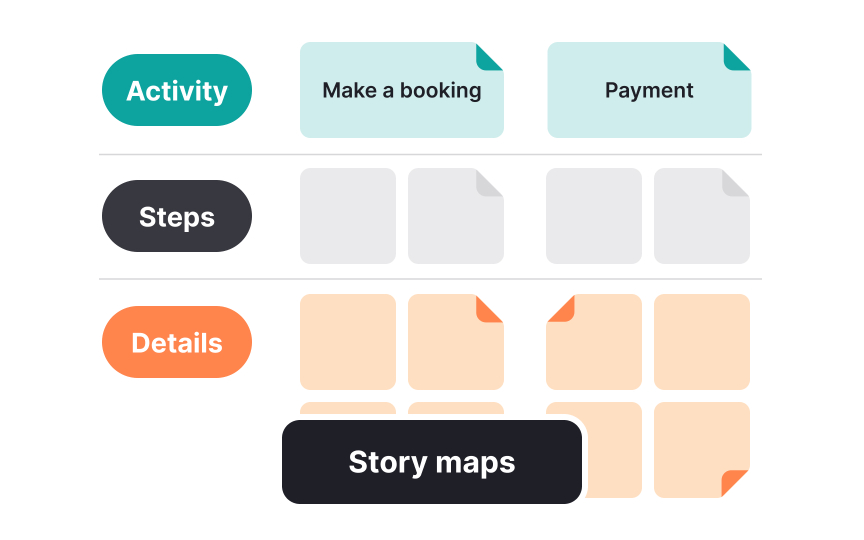Journey maps and story mapping in agile teams
Journey maps and story maps provide visual frameworks that help agile teams understand the bigger picture behind individual user stories. While user stories focus on specific increments of functionality, these mapping techniques reveal how stories connect to form coherent user experiences. They transform abstract requirements into tangible user-centered narratives that teams can visualize and prioritize. Journey maps track users’ experience through time, documenting their actions, thoughts, and emotions at each touchpoint with a product. This emotional perspective helps teams identify pain points and opportunities that might be missed when focusing solely on functionality. Journey maps are particularly valuable early in product development to ensure solutions address actual user needs.
Story mapping, popularized by Jeff Patton, arranges user stories in a two-dimensional grid. The horizontal axis represents the sequential flow of user activities, while the vertical axis indicates priority. This arrangement helps teams identify gaps in the user experience, determine a minimum viable product, and plan releases that deliver complete slices of functionality. Unlike flat backlogs, story maps maintain narrative context, ensuring teams understand how individual stories contribute to the overall user experience.[1]

